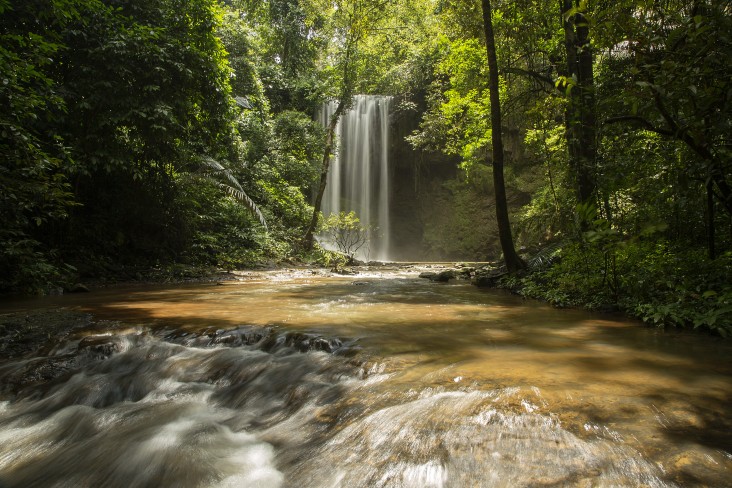Speeches Shim

Cambodia is rich in biodiversity. It is home to the third-largest lowland dry evergreen forest in Southeast Asia, with 2,300 plant species, 14 endangered animals, and one of seven elephant corridors left in the world. Nearly 40 percent of Cambodia’s land is protected, however, illegal timber harvesting and wildlife poaching remain serious threats to preserving Cambodia’s precious natural resources. Additionally, forest land conversion for agriculture, overexploitation of key species, mine exploration and undervaluing of ecological services such as soil fertility, carbon sequestration and watershed stability also contribute to Cambodia’s rapid deforestation rate. Deforestation not only threatens biodiversity; it can have devastating effects of increasing flooding and erosion in the Mekong river basin, endangering livelihoods from fishing and rice cultivation, and reducing water storage and availability in the dry season.
USAID is helping Cambodia toward more equitable and sustainable development by preserving and managing its natural resources. Activities support communities that depend on natural resources for their livelihoods, and governance reforms to manage watersheds and protected areas. Through meaningful participation and joint decision-making with local communities, indigenous groups, and other marginalized populations, new laws and policies are coming into place that encourage the communities’ access to and management of their forests and surrounding land. Communities and government authorities living in the floodplain areas, which have a rich mosaic of biologically diverse habitats, are trained on developing sustainable plans for managing and co-patrolling forested areas, community fish refuges, protected areas, and other conservation zones. Entrepreneurs who focus on non-timber forest products such as bamboo, honey and resin receive support linking them with business development service providers so they can access productivity-enhancing expertise, technology, equipment, loans, enabling them to become more competitive in the market.
USAID is also helping the government and local communities identify and take advantage of opportunities for revenue generation from carbon sequestration and the avoidance of emissions from deforestation, and sustainable eco-tourism. In addition, USAID is strengthening Cambodian laws and policies for natural resources and protected area management, to improve implementation and enforcement, and guide Cambodia’s compliance with environmental laws, international commitments and participation in the UN’s Reducing Emissions from Deforestation and Forest Degradation (REDD+) program. Over the long term, these efforts will help preserve and conserve forest lands and other areas of significant biodiversity, support sustainable economic development, and increase the resilience and prosperity of Cambodians through strategic planning for equitable and sustainable natural resource management.
RESULTS
- Helped over 309,100 people reap the economic benefits of sustainable natural management and conservation.
- Improved the management of natural resources of more than 2,600,000 hectares of land.
- Supported livelihood activities in community forest areas, increasing household income by almost 50 percent.
- Linked sustainable natural resource products to markets, increasing household income by 80 percent.
- Advanced 41 land titles and agreements, benefitting more than 7,000 families.
- Developed 23 sustainable forestry and biodiversity management plans that help rural communities and forest rangers co-patrol their local forests and stop illegal logging.
- Trained more than 70,000 people in natural resources management and biodiversity conservation.
- Reduced over 14 million metric tons of greenhouse gas emissions from deforestation and land use change, equivalent to emissions from driving 2.9 million cars for one year.
- Helped over 81,000 people to adapt to the impacts of climate variability.


Comment
Make a general inquiry or suggest an improvement.